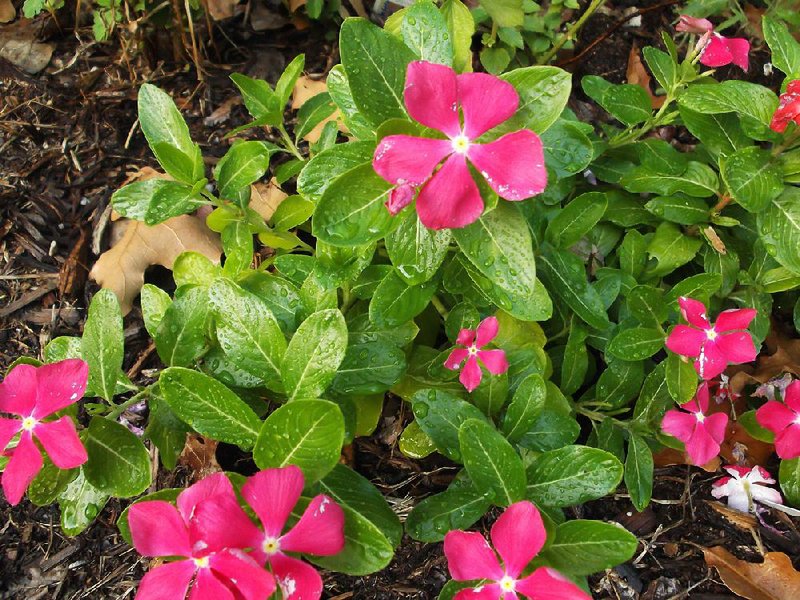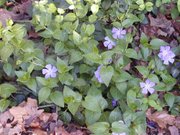Q After I stopped trying to kill everything in our backyard a couple of years ago, all kinds of things have come up. The criteria are now: If it has a nice bloom, we'll find a place. One of these is blooming now with white blooms, probably from some seed I threw out years ago. The tall white one has several others with it and all have their own "room."
A The white flowering plant is commonly called boneset, Eupatorium perfoliatum. This native plant is closely related to the tall purple flowering Joe-Pye weed (Eupatorium purpureum). It thrives in full sun to partial shade and can get quite large. It blooms late summer through fall and is very attractive to bees and butterflies. There are several theories as to where the common name comes from. Boneset was commonly used to treat influenza or colds; others said it helped with broken bones; others hold that it refers to the treatment of an 18th-century flu called "break bone fever." Regardless, all parts of the plant are quite toxic and bitter.
Q Please tell me how to take a sprig from a fig tree and start another tree, and at what time of the year should I do this?
A You can easily start figs from cuttings or layering -- taking an existing low-hanging branch and mounding soil over it. For cuttings, I would take them in early spring, as the tree is beginning to grow, when you would normally be pruning if needed.
Q Do you cut back a peony bush after it dies? What about hibiscus bushes?
A Peonies should be cut back and cleaned up as they die back in the fall. Hardy hibiscus plants die back to the ground after a killing frost, so for aesthetics, cut them back after they die back or after a killing frost. If you are referring to a rose of Sharon deciduous shrub rather than the hardy hibiscus perennial, those are not cut back to the ground but merely pruned as needed in late February.
Q I planted five single-trunk Natchez crape myrtles about four years ago and have deliberately not trimmed them. They are now close to 20 feet tall and about ready for a quality prune job. I personally do not like the hat racking or "crape murder" style of trimming that is so pervasive around town. I'm all about the "bones" of a tree and happen to think that single trunk crapes are among the most beautiful trees out there. My question is, would it be advisable to trim them now so as to avoid any ice damage that might occur this winter on the leggy branching, or should I hope for the best and wait until spring?
A Very light pruning to add stability to weak limbs is not a problem now, but main pruning should be done after the potential for winter weather has passed in late February to mid-March. Having extra branches now and through the winter is your buffer should we have cold damage. I have seen some spectacular single-trunked crape myrtle trees, so knowing what you want with expected outcomes in pruning is so much more preferable to the butchered look we see all too often.
Q A number of years ago a neighbor gave me a bucket full of periwinkle shoots. Unfortunately, I planted them. They do hold the hillside in place, but they are taking over. I tried every spray I can find, and they still thrive. How do I get rid of the periwinkle?
A I think you are referring to vinca, not periwinkle. Vinca minor and vinca major are perennial groundcovers that can become quite invasive. The plant commonly called annual vinca or periwinkle is Catharanthus roseus, which is a summer annual that would not pose a problem. I battle vinca every year, since it creeps in from a neighbor's yard. It is quite tenacious. You can keep after it by cutting it to the quick whenever you see it; you can spray with Round-up or similar herbicide. I have found shearing it back and then putting cardboard over it and mulch on top of that has helped, but it won't be gone in one season. Good luck!
Janet B. Carson is a horticulture specialist for the University of Arkansas Cooperative Extension Service. Write to her at 2301 S. University Ave., Little Rock, Ark. 72204 or email her at
jcarson@arkansasonline.com
HomeStyle on 11/15/2014


